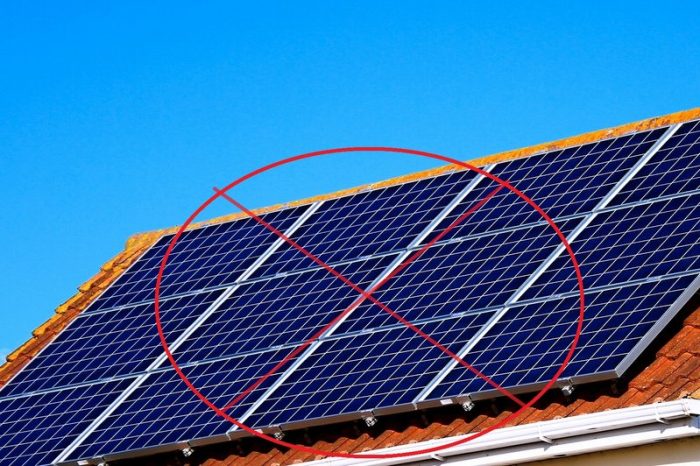
“Can I put solar on the north side of my house?” my sister asked me.
“Sure! If you move to Australia,” I responded, seeing her eyes roll through the phone at my factual, yet unconstructive response.
She was asking because her Home Owners Association (HOA) only allows solar on the rear side of houses, which for hers is the north side. As I dug into this issue, I was surprised to learn about the restrictions that HOAs have on solar. More so: restricting solar, which increases property value, seemed contradictory to the HOAs’ stated goals of maintaining or improving property values.
According to the National Renewable Energy Laboratory (NREL), home values increase by $20 for every $1 in energy bill reduction. As an example, a solar energy system that reduces energy bills by $700 per year, increases home value by $14,000!
My sister was incredibly disappointed as she was particularly looking forward to going solar with the purchase of her first house. But now this seemed impossible. And she is not alone.
Solar DOA with HOAs
HOAs, and their influence, have been growing during the past 50 years. According to iProperty Management, in the 1970s, there were only 10,000 HOAs nationwide with just 2.1 million residents impacted, equaling about 1% of U.S. residents. But by 2020, there were already 335,000 HOAs, with more than 74 million residents, impacting 22% of the U.S. population.
Based on construction trends, with an increase of 131.5% of new HOA construction between 2009 and 2019, the percentage of U.S. residents impacted by HOAs is likely to continue growing. Further demonstrating this trajectory, in 2021, a massive 66.9% of new homes built were part of HOAs, up 2.9% from 2020.
HOAs are not a monolith. They vary from neighborhood to neighborhood and state to state. When it comes to solar installations, HOA restrictions can range from complete bans to no restrictions at all. Some require permissions from neighbors or place limits on where and how PV can be installed at a home.
At the same time, some states have enacted laws prohibiting HOAs from limiting a homeowner’s right to install solar. This includes laws like solar access, which states that HOAs cannot outright restrict but can place reasonable limitations, or solar easement, which requires an agreement with a governing body to ensure solar energy systems can remain productive. While these state laws are a first step to protecting homeowners’ access to solar, there is much more that can be done.
The satellite TV industry presents a replicable success story for solar.
In the early 1990s, when the cable versus satellite competition was at its height, HOAs were legally allowed to completely restrict satellite TV installation on homes. However, thanks to a national lobbying effort, Congress passed the Telecommunications Act of 1996 that banned HOAs from restricting, prohibiting or delaying the installation of satellite dishes less than 39 inches in diameter. The only restrictions allowed were for legitimate safety concerns or to preserve certain historic properties. This not only opened up the market for satellite TV providers, but empowered homeowners to make choices on the free market.
The solar industry can unite, with the support of leading clean energy advocates, to lobby at the national level for homeowner protections to install solar.
Federal legislation for solar with equivalent impact to the Telecommunications Act of 1996 would create a larger market for solar installers, accelerate the proliferation of clean energy, help to electrify America, and fight climate change.
This becomes even more critical for the implementation of the Inflation Reduction Act (IRA). The average U.S. household is eligible for $5,739 in tax credits and $367 in performance rebates via the IRA. With approximately 25% of homeowners (nearly 30.2 million households) controlled by HOAs, that’s up to $184 billion of federal funding for electrification efforts that could be at risk due to HOA influence.
With that amount of money on the table, this is more than individual issue – it is a larger economic threat.
Since the solar industry has overcome many other challenges through its evolution, it has the wherewithal, organizational ability and knowhow to defeat HOA restrictions if it is prioritized – even with all the other important causes that need to be addressed.
Jessica Fishman is a strategic marketing professional with nearly 20 years of experience, 10 of which are in the clean energy industry. Passionate about addressing climate change by accelerating the clean energy transition, she has worked at leading, renewable companies and with numerous clean energy technologies, building marketing and communications departments.
— Solar Builder magazine
[source: https://solarbuildermag.com/news/hoas-prevent-the-proliferation-of-home-solar/]

Leave a Reply
You must be logged in to post a comment.